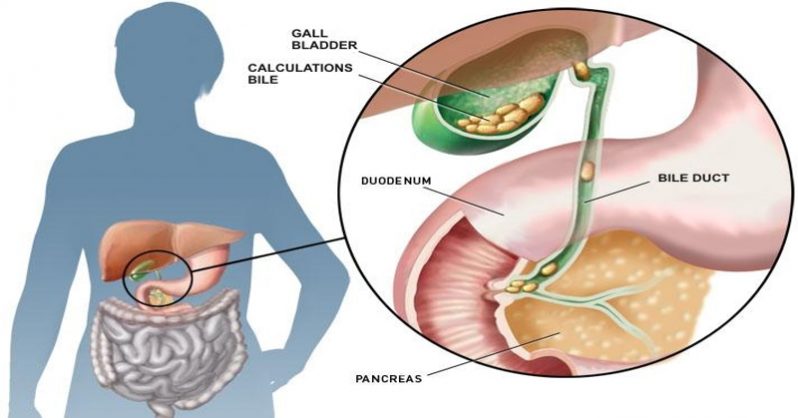Presence of stones in the biliary system is called gallstone disease. Most common location of this is the gallbladder – Cholelithiasis ; a pouch in the biliary tree which temporarily stores bile coming from the liver, in addition stones can be found in the tubes which transport bile into the gut called ‘common bile duct’ (CBD) or hepatic ducts transport bile from liver – Choledocholithiasis.
Mere presence of stones in the biliary system does not warrant any medical intervention as formation of gallstones is a common finding with increasing age. Some people are more susceptible to form gallstones, Female gender is four times more prone to form gallstones than males. This risk increase with age more than 40yr, fair skin complexion, giving birth to children and obesity. In addition use of oral contraceptive(OCP) medication also increase their risk to get gallstones. Females are thought to be more vulnerable to get gallstones due to imbalances of their reproductive hormones and most probably the cause with OCP as well. Certain origins of people also are more likely to get gallstones i.e. Western and European origins.
Eighty percent of people with gallstone disease will not know they have gallstone disease and will die with it. Others will get symptoms of it like abdominal pain in the right upper abdomen or upper abdomen. This pain can be following meals especially after a heavy meal with fatty food. If someone is having non responsive gastritis, abdominal discomfort it can be due to gallstone. Avoidance of fatty meals will resolve your symptoms.
Sometimes gallstones can give rise to complications which can be life threatening at times. Gallbladder can get inflamed or infected – cholecystitis. This can progress to life threatening consequences if not treated properly.
Sometimes gallstones can move along the tubes and can block the them giving rise to a condition called ‘obstructed jaundice’ which will turn your eyes and skin to yellow, produce dark colored urine. In addition this can lead to block the tube which secrete digestive juice from pancreas causing ‘gallstone pancreatitis’.
Presence of gallstones can be confirmed by a simple noninvasive imaging test called abdominal ultrasound scan.
If you have symptomatic gallstone disease next step is to treat it by a key hole surgery called ‘laparoscopic cholecystectomy’ to remove gallbladder with stones.
If you are found with infection or inflammation of the gallbladder and come to a specialist surgeon within 48 to 72 hrs from the onset of symptoms you will most probably treated with antibiotics and will have to undergo a laparoscopic cholecystectomy.
